General Relativity
© The scientific sentence. 2010
|
General relativity:
Phenomena that would stem from Einstein's theory
weirdest phenomena ..
1. The theory of relativity
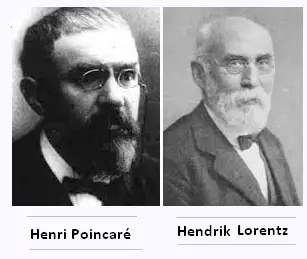 Time Dilation, Length Contraction, E = m c2, black holes,
big bang, gravitational waves; all this words come from Relativity.
Time Dilation, Length Contraction, E = m c2, black holes,
big bang, gravitational waves; all this words come from Relativity.
Albert Einstein, German and American physicist (1879 - 1955) duilt
special relativity in 1905.
Henri Poicaré, French mathematician,
theoretical physicist (1854 - 1912), and Hendrik Antoon Lorentz ,
well known by his transformation equations, a Dutch physicist
(1853 - 1928) were the kwnown precursors of this theory.
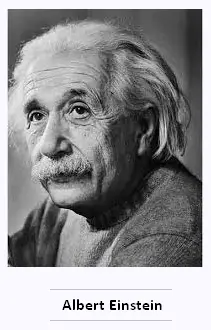 The Enistein's special relativity includes spacetime as a unified entity
of space and time, relativity of simultaneity, kinematic and gravitational
time dilation, and length contraction, as well as the equivalence mass-energie.
The Enistein's special relativity includes spacetime as a unified entity
of space and time, relativity of simultaneity, kinematic and gravitational
time dilation, and length contraction, as well as the equivalence mass-energie.
The General relativity is the relativistic theory of the gravitation, called also
the geometric theory of gravitation. It is built by Einstein in 1915.
The theory relates the curvature of spacetime specified by the Einstein
field equations. It is based on the differential geometry and include
Ricci curvature and Christoffel symbols.
At first, the general relativity is a purely intellectual construction,
for which there wasn't a possibility to experiment directly.
Here is what it looks like the Einstein's field equations:

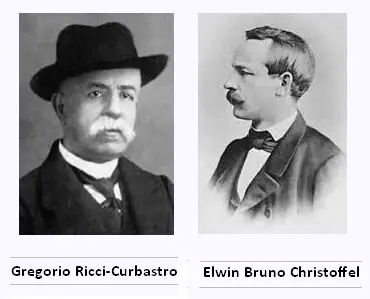 The work of
Gregorio Ricci-Curbastro, Italian mathematician (1853-1925); and
Elwin Bruno Christoffel (1829 - 1900), German mathematician and physicist
contribute to found the general relativity.
The work of
Gregorio Ricci-Curbastro, Italian mathematician (1853-1925); and
Elwin Bruno Christoffel (1829 - 1900), German mathematician and physicist
contribute to found the general relativity.
2. Black holes
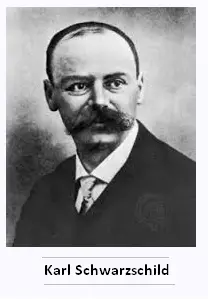 One of the phenomena hiding in the theory of general relativity, was first
described, in 1916, by Karl Schwarzschild (1873 � 1916), a German astronomer who gave
a solution of the Einstein's equations.
One of the phenomena hiding in the theory of general relativity, was first
described, in 1916, by Karl Schwarzschild (1873 � 1916), a German astronomer who gave
a solution of the Einstein's equations.
Schwarzschild's solution showed that a small spherical object with a lot of mass would
curve space-time so much that it would swallow and trap anything that came close,
including light. The phenomenon was later named a black hole.
Real black holes weren't discovered until more than a decade after
Einstein's death in 1955.
3. Gravitational lensing
In 1919 an eclipse if the Sun allowed to measure the deflexion
of light beam by the Sun, verifying one of the major predictions the
general relativity.
4. The Big Bang
It is a theory about how the universe began. Its proponents suggest that some 10 billion to
20 billion years ago, a massive blast allowed all the universe's to spring from some ancient
and unknown type of energy.
The Big Bang's theory maintains that the universe expanded with incomprehensible speed from
its point origin to astronomical scope. Expansion has apparently continued, but much more slowly,
over the ensuing billions of years.
Scientists who studied Einstein's theory in the 1920s realized that his
equations showed that the universe should be expanding, and , in the reverse,
the universe would get smaller and smaller until a moment now called the Big Bang.
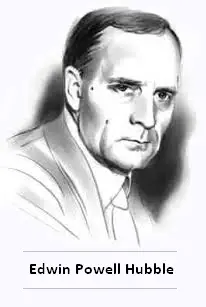
As with black holes, the idea was so weird that Einstein didn't believe it. He came up with
a "cosmological constant" to stick in his equations to stop the universe's expansion. He
finally realized he was wrong after American astronomer Edwin Hubble (1889-1953),
showed that distant galaxies are moving away from us.
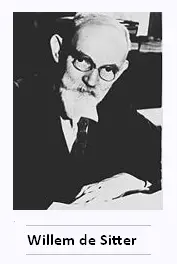 Einstein abandoned the cosmological constant that he had introduced so ad
hoc reporting for a stationary universe and calls this introduction biggest mistake
of his life.
Einstein abandoned the cosmological constant that he had introduced so ad
hoc reporting for a stationary universe and calls this introduction biggest mistake
of his life.
In 1932, Einstein published with Willem de Sitter, a Dutch mathematician,
physicist and astronomer (1872 - 1934), the first model of expanding Universe.
The big bang theory leaves several major questions unanswered,
mainly the original cause of the big bang itself. S
5. GPs
GPs stands for Global Positioning system.
One says that the only practical, everyday use of general relativity is
our cells that shows us our directions on Earth.
The general theory shows that the stronger gravity is, the slower time goes.
Time is an important variable that GPs satellites use to triangulate our location.
GPs satellites are orbiting 20,000 kilometres above the Earth's surface. The weaker
gravity at that distance is weak, but the about 500 trillionths of a second
each second is needed in such a precise technology.
The special relativity, as well as the general relativity,
most importantly, are used to correct time in the GPs technology.
6. Gravitational waves
Gravitational waves are ripples in space-time that Albert Einstein's
theory of general relatively predicted would be produced by massive
phenomena such as neutron stars or black holes colliding.
Those ripples will propagate through space time at the speed of light.
Detecting gravitational waves would tell us whether the Einstein's
general theory of relativity is really correct.
If we drew a straight line on the surface of a lake and then threw a stone into
the water, producing waves, that might cause the line to curve.
The same thing happens with space-time when a gravitational wave passes through.
Based on this idea, We built detectors. Presntly, They are two used
detectors. Virgo in Italy, LIGO in the USA on Earth. The European eLISA
detector on space is planned to be launched in 2034.
The two ground-based detectors LIGO and Virgo work
on the basis of the interferometer of Michelson.
Laser Interferometer Gravitational-wave Observatory (LIGO) detectors, are located in Livingston,
Louisiana, and Hanford, Washington, USA. Virgo (from Virgo cluster) is located
at Cascina near Pise, Italy.
Depending on what their source is, the frequency of the graviational waves
also varies. And any given detector can only detect certain frequencies of gravity waves.
LIGO and eLISA are designed to detect different frequencies of gravitational waves.
LIGO should be able to detect waves made by smaller objects like neutron stars and
smaller black holes up to 500 times the mass of our sun. More massive objects like
colliding super-massive black holes, up to a million times the mass of the sun,
will be detectable with eLISA.
|
|